‘We have ended the war on beautiful clean coal.’ That’s what President Trump said in his 2018 State of the Union address.
Here is our supporting manifesto:
Electricity is life. Coal is electricity.
The 1970 National Environmental Policy Act (NEPA) gave birth to the concept of the “human environment” as the focus of environmental regulatory activity. This concept was fleshed out in the 1972 Declaration of the United Nations Conference on the Human Environment (Stockholm Declaration), which notably states that:
- The protection and improvement of the human environment is a major issue which affects the well-being of peoples and economic development throughout the world; it is the urgent desire of the peoples of the whole world and the duty of all Governments
- Protecting the human environment also includes considering the “… physical, mental and social health of man…”
- In the developing countries most of the environmental problems are caused by under-development. Millions continue to live far below the minimum levels required for a decent human existence, deprived of adequate food and clothing, shelter and education, health and sanitation.
- Man has the fundamental right to freedom, equality and adequate conditions of life, in an environment of a quality that permits a life of dignity and well-being.
In short, everyone recognizes that poverty is bad news for humans and their environment — i.e., the human environment.
One major difference in the human environment between wealthy and poor nations is the availability of affordable and reliable energy. Electrification, in particular, is viewed as the greatest engineering accomplishment of the 20th century. Below is how first-man-on-the-moon Neil Armstrong delivered that conclusion of a National Academy of Engineering survey in 2000.
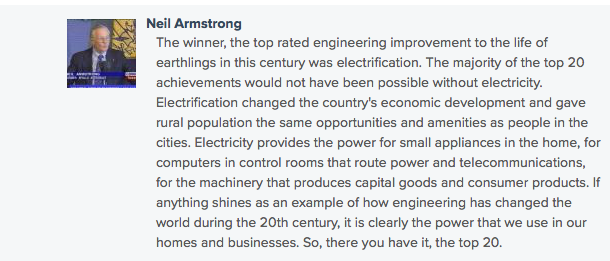
More electricity use means a better human environment. Consider this chart from the Center for Global Development. Why would anyone want to use less electricity?
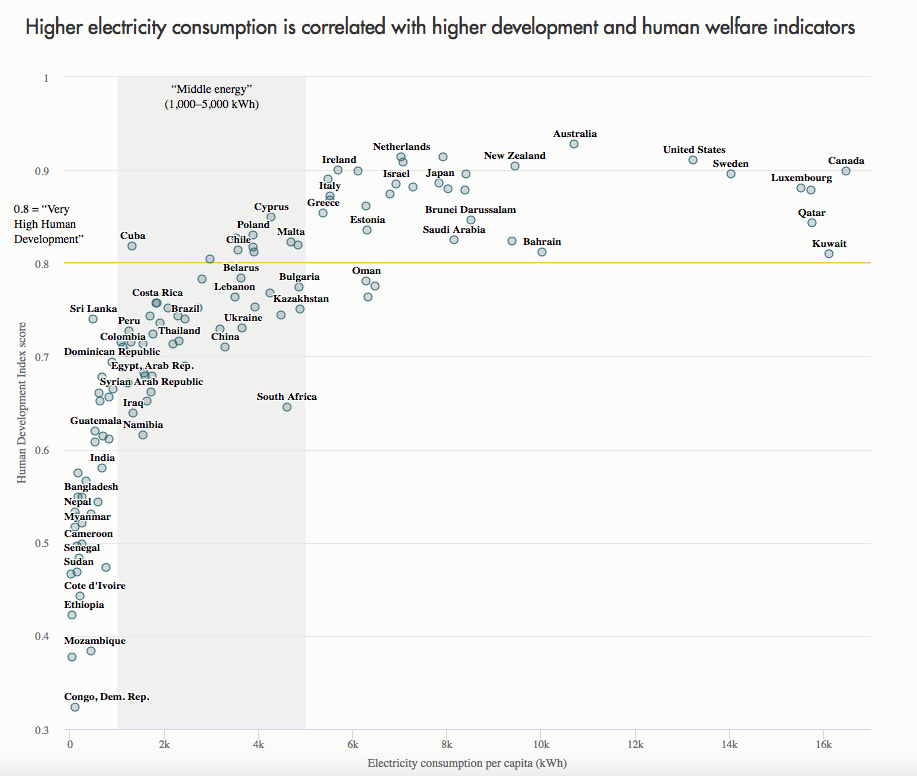
Coal has been the historical foundation of electrification around the world because it is the most affordable and readily available fuel.
Coal is clean. Burning coal in a modern power plant is clean. Emissions of conventional air pollutants are minimized by technology and are harmless. Every county in the US with a coal plant complies with the ultra-stringent standards issued by EPA under the Clean Air Act. Moreover coal-fired power plants improve air quality around the world as the electricity generated replaces the unscrubbed residential and industrial burning of biomass and coal briquettes. Consider the chart below comparison for the state-of-the-art Prarie State coal plant:
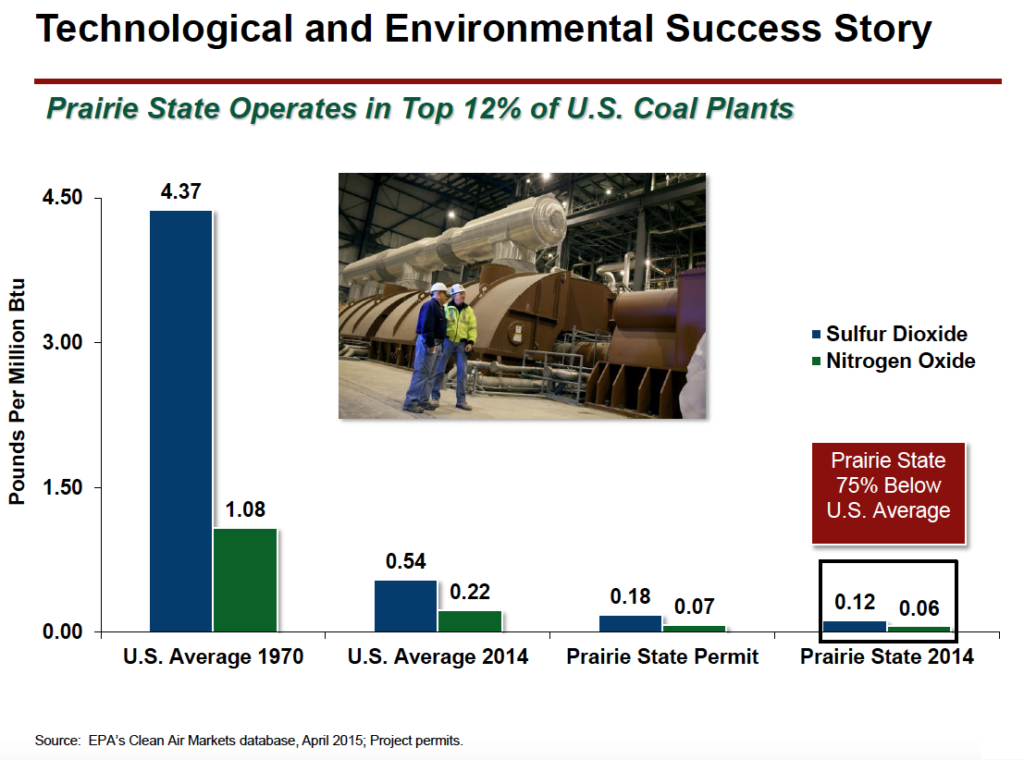
Coal means lowest-cost electricity. Maintaining existing coal plants is much less expensive than replacing them.

Coal helps the US consumers pay the lowest price for electricity in the developed world.
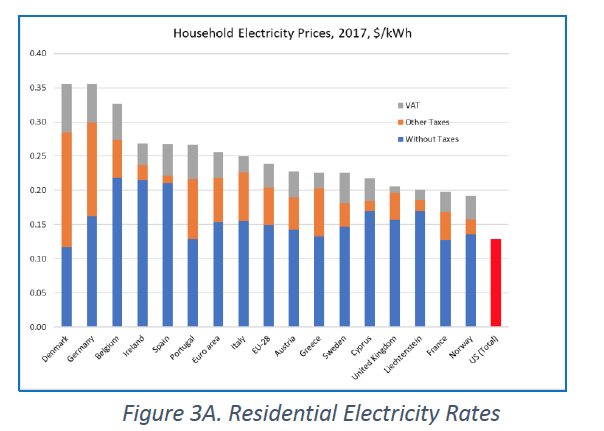
Coal helps US businesses pay 30% less for electricity than the European Union average.
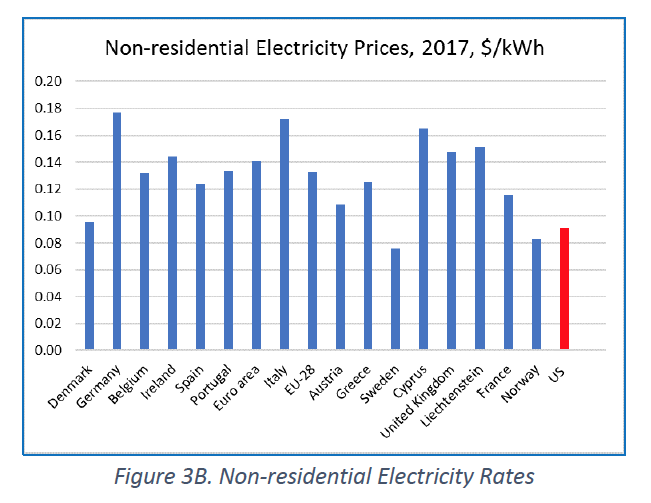
Coal-powered US states pay much lower electricity prices than low-coal-powered states.
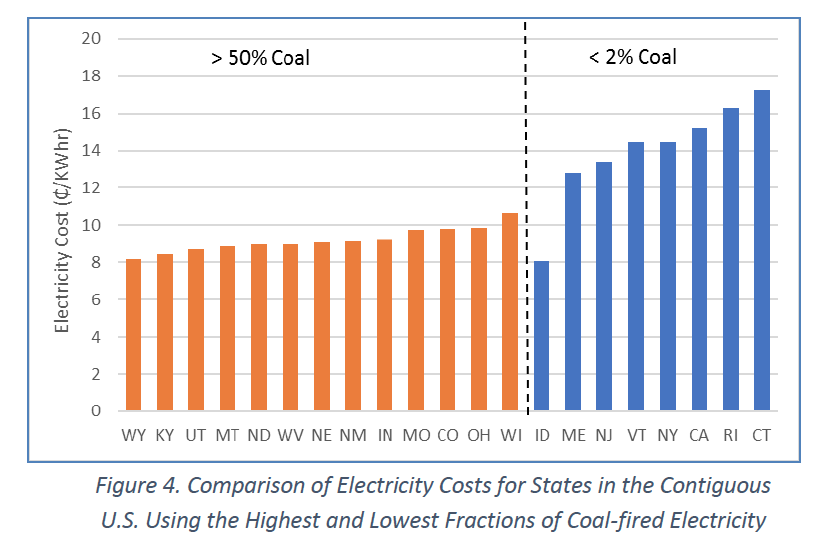
Source: National Coal Council, Power Reset, September 2018.
Coal is the most reliable fuel for electricity. Coal plants do not require the wind to blow, the sun to shine or precipitation to fall. Coal plants do not require (often controversial) pipelines delivering natural gas at a slow rate of 22 miles per hour. During peak electricity demand, a coal plant operator can look out his window and see a several-months supply of fuel ready to be burned as required. Below is a chart comparing coal to other fuel types.
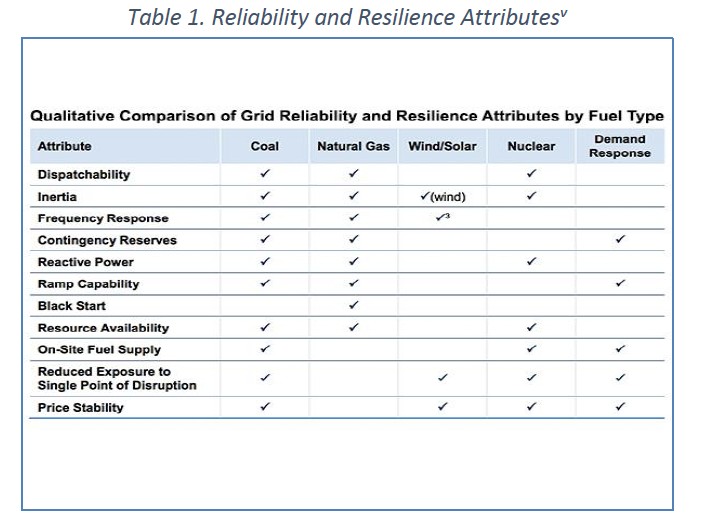
Without coal, a blackout would have occurred during the January 2018 ‘bomb cyclone.’
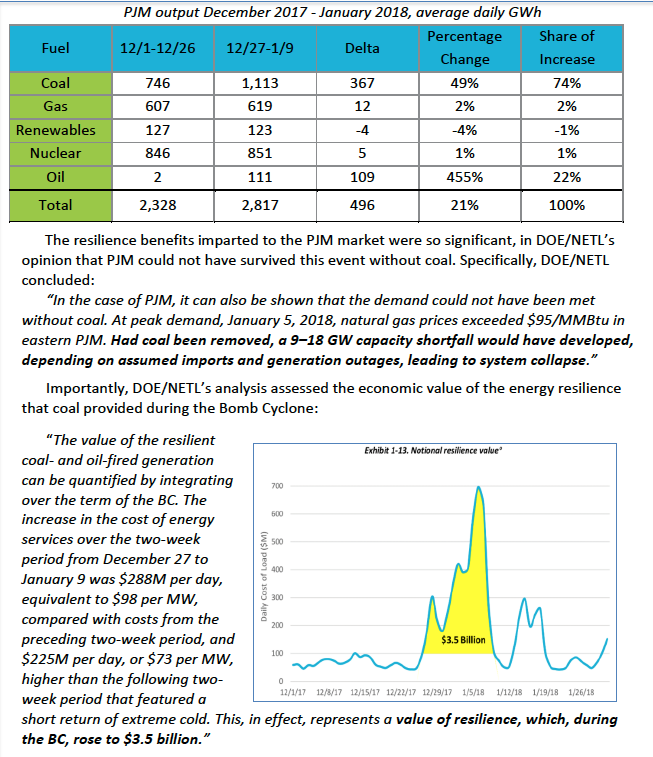
Source: National Coal Council, Power Reset, September 2018.
The chart below illustrates how coal plant operators maintain a steady supply of immediately available fuel.
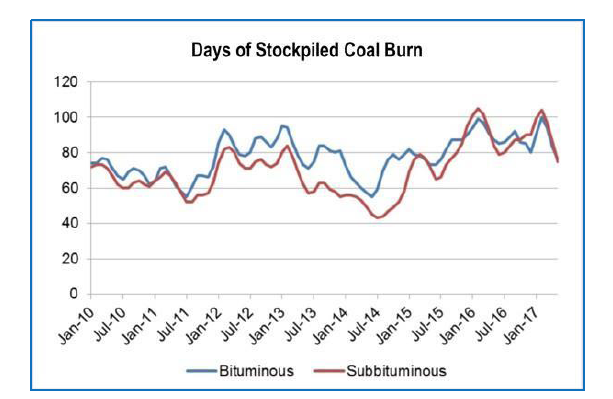
Source: National Coal Council, Power Reset, September 2018.
Coal powers the world. Coal is the No. 1 fuel for electricity generation in the world. More coal than ever is being mined and burned on a global basis. Below is a chart showing coal’s continued dominance despite 20 years of cliamte alarmism.
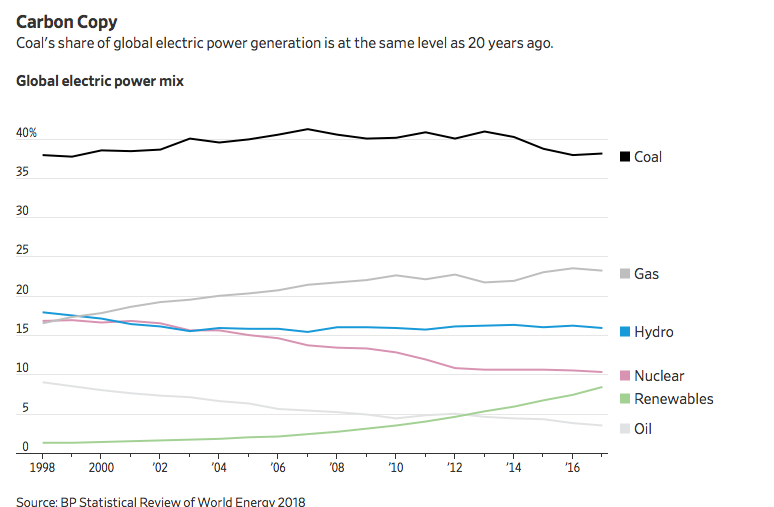
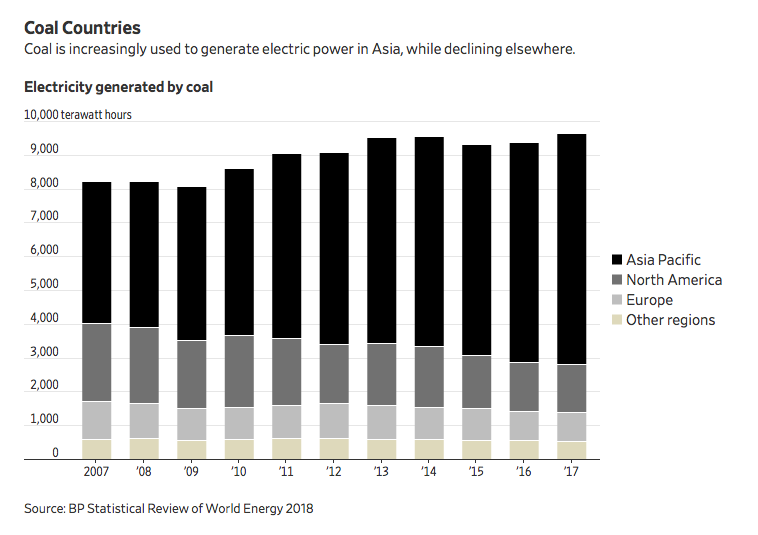
Source: BP Statistical Review of World Energy, June 2018 | Wall Street Journal, September 3, 2018
America is loaded with coal. The U.S. holds 27% of the world coal reserves — a several hundred year supply.
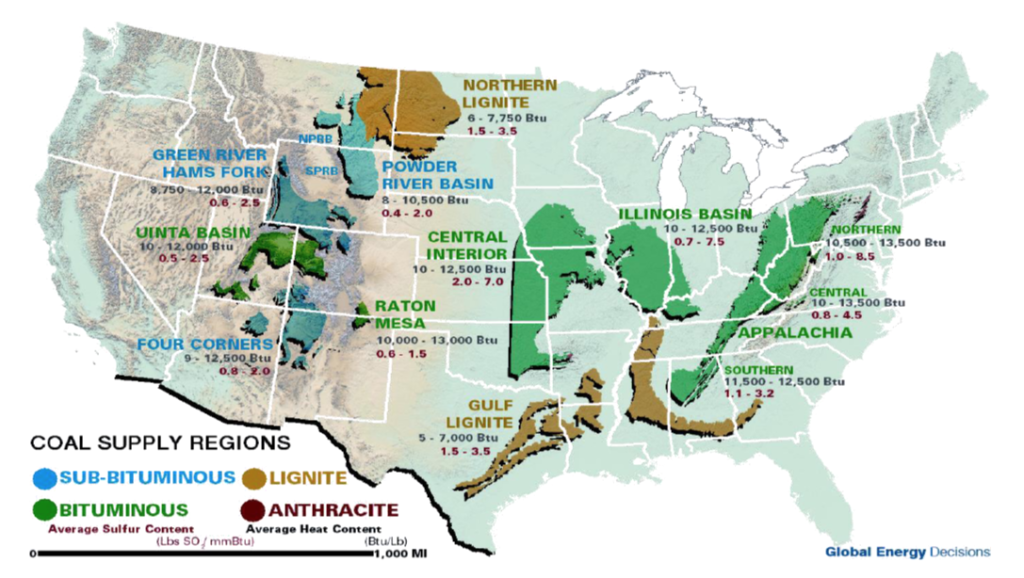
Coal will continue to power the world. Global population is projected to growth from about 7.7 billion today to about 10 billion by 2050. More people living higher, more energy-intensive standards of living will require all forms of energy, but especially coal because it is affordable and reliable.
US CO2 emissions are irrelevant to global climate. Putting aside the debate over the degree of the effect of carbon dioxide emissions on global climate, even if the US entirely stopped the use of fossil fuels today (which would cause societal chaos and calamity), the difference in atmospheric carbon dioxide levels by the year 2100 would be on the order of a few percent, which is insignificant to global climate.
The world is not reducing CO2 emissions. Global carbon dioxide emissions are on the rise. The Paris Climate Accord is a voluntary in nature and does not require any nation to cut carbon dioxide emissions. Moreover, no nation is actually cutting its emissions because that would cause economic problems. Nations who claim to be cutting emissions are really just outsourcing their emissions to Asia.
Energy choices mandated by governments, greens, and political correctness more than fail, they are disasters.
- Germany has spent $220 billion ($2,500 per German) on its Energiwende program since 2000. After the Fukushima nuclear disaster, Germany panicked and abandoned its emission-free nuclear fleet, forcing even more reliance on coal. As a result, Germans pay some of the highest electricity prices in Europe and CO2 emissions have increased. Sources: 1. TheHill.com, Germany shows how shifting to renewable energy can backfire, January 17, 2018 Web |PDF; 2. Reuters, German household power prices at record high, October 24, 2017 Web | PDF.
- The heavy reliance of South Australia’s grid on wind/solar energy (40%) has led to blackouts. Oh, by the way, South Australia has the highest electricity prices in the world. Sources: 1. News.com.au, Why South Australia’s blackouts are a problem for us all, February 10, 2017 Web | PDF; 2. ABC.net.au, South Australia power prices to rise to highest in the world on Saturday, energy expert warns, June 27, 2017 Web | PDF
- Follow its coal phase-out, “Ontario now has the fastest-growing electricity costs in Canada and among the highest in North America. And those rising costs are hitting average Ontarians in the wallet. Between 2008 and 2016, Ontario’s residential electricity costs (that’s your home hydro bill) increased by 71 per cent, far outpacing the 34 per cent average growth in electricity prices nationwide. Consequently, in 2016 Toronto residents paid $60 more per month than the average Canadian for electricity.” Web | PDF
